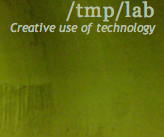Difference between revisions of "Interactive lasers"
Samneurohack (talk | contribs) (→Conversion from svg to ild file format) |
Samneurohack (talk | contribs) (→Conversion from svg to ild file format) |
||
| Line 78: | Line 78: | ||
* Use convert "object to path". | * Use convert "object to path". | ||
* Select on each letter, apply "simplify" | * Select on each letter, apply "simplify" | ||
| − | * | + | * svg2ild.py that can be found on github by marcan or search for clakoscrew. |
* python svg2ild.py -q svgfile.scg ildfile.ild | * python svg2ild.py -q svgfile.scg ildfile.ild | ||
Revision as of 22:03, 8 March 2016
Don't be stupid : LASERS ARE DANGEROUS.
You must comply to your local laws.
For introduction to laser safety, a great video : 31C3 Safer playing with lasers
(WIKI IN PROGRESS)
Contents
Goals
The main idea is to add interactivity to "leisure" lasers. i.e with a gamepad one can play to old style vector games on city buildings. Again you must have control on anything in front of laser light. See picture at bottom.
Different levels of complexity are possible. Commercial lasers uses ilda files/connections to draw whatever you want, but you can build your own, see hardware section.
- The very fast and easy plan is to switch ilda scenes according to some inputs. You can use already made ilda files (see download section) in a SDcard plugged inside the laser fixture and use DMX protocol to switch. DMX usb cards are cheap, usually we use enttec ones. DMX controlled lasers are cheaper but quite limited to ilda files.
- If the plan is too draw live, it depends on the laser fixture DIY or commercial. Lot of possibilities depending on the number of colors, from using an arduino, a 5.1 USB soundcard, up to use commercials (opensource) cards using the standarts ilda connect ports.
- In any way, such lasers must feature X- and Y-scanners (i.e. galvanometer-moved mirrors) in order to position the beam accurately
Hardware
Obviously there is DIY Lasers and commercial ones and there is a bunch of cards integrating some DACs to talk to the laser fixture.
A great forum for bootstrap your project is laser freak that comes in different langages.
We play with two different setups :
- a green DIY laser made at la Blackboxe with a lasershark USB DAC card.
- an ilda DB25 ports RGB commercial laser for clubs with an Etherdream USB DAC card.
Commercial Lasers
Warning ! Not all lasers can draw anything ! Only the ones featuring scanners (i.e. galvanometer-moved mirrors) for the X- and Y-axes can do it (unlike the cheapest ones, which only draw random patterns).
On commercial lasers, the standard way to drive the beam is the DB25-connector-based ILDA interface (source : laserfx.com). It is based on analog differential control signals.
Therefore you'll need some external hardware capable of outputting such signals, be it standalone or controlled by a host computer. Such hardware is usually named concisely "DAC".
DIY Lasers
[1] : a DIY laser projector made from scratch.
Even the galvanometers are home-built !
In particular, there is a detailed study of the design of the galvanometers' servo loop control : galvanometers feature inertia like any mechanical devices, and achieving fast and accurate moves requires to "compensate" the galvanometers' drive signals with respect to their sensed position.
Control boxes : DAC
Lasershark
- One color only
- to be used with openlase
- USB
Ether-dream
- This is an ILDA control box which can either work as standalone (displaying a sequence of ILDA scenes tored internally or on an SD-card) or receive IP frames for driving the beam.
- RGB capable
- RJ45 : The ether dream is directly tcp/IP controlled, so you can imagine very cool projects with very easy setup and of course the programming langage you prefer.
- The firmware is open-source (but what about the hardware ?)
- In depth protocol page kind of hidden [2]
Examples
Laser Asteroids
An "Asteroids"-variant game from Brandon Thomas (Echelon) on GitHub
Laser Hexagon
Video preview here (work in progress).
For more info, see project page.
Conversion from svg to ild file format
- Using inkscape to create shapes, text,..
- Use convert "object to path".
- Select on each letter, apply "simplify"
- svg2ild.py that can be found on github by marcan or search for clakoscrew.
- python svg2ild.py -q svgfile.scg ildfile.ild
Reminder :
- with "simplify", there is no "q" command in created svg path, that generate an error with svg2ild.py
- todo : debug svg2ild.py

